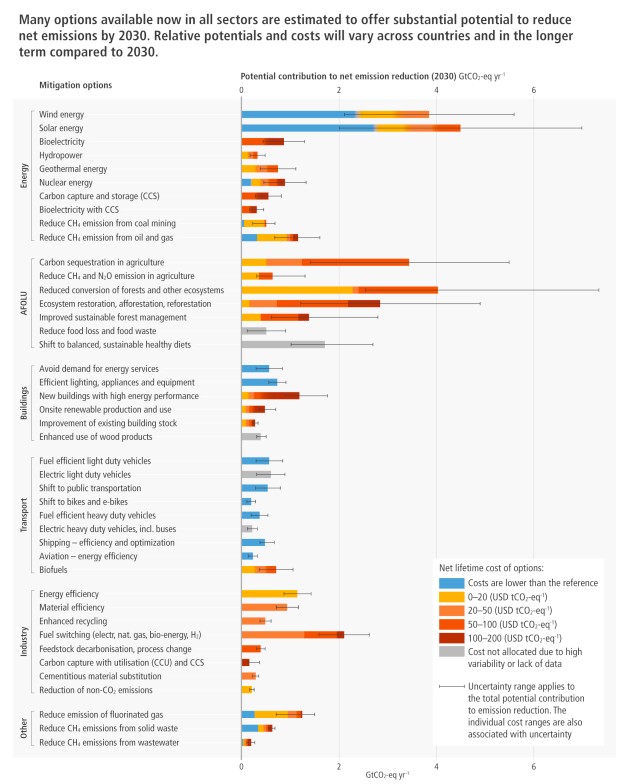In its last part, the IPCC report warns of the importance of acting now. But it also shows how all the solutions are already available, and only need to be scaled up.
The authoritative IPCC report on the state of climate change is not known to be optimistic. And indeed, the finding presented in the 6th report, the last part of which was published on April 4, 2022, is rather alarming. Humanity must act quickly and extensively to stop greenhouse gas emissions: the window of opportunity before the point of no return is barely a few years.
Despite everything, the IPCC is neither optimistic nor pessimistic: it makes concrete observations based on the analysis of all scientific knowledge. It also means that the solutions are in the background of each component. The latest is no exception. On the contrary: “ We have the necessary tools and know-how to limit global warming »said in a press release the group’s president, Hoesung Lee, who also dared to use the word ” optimistic “.
Within the report itself, there are various key paths that can help get out of high carbon emissions and achieve the objectives: a maximum peak in 2025 and then a 40% reduction in all emissions by 2030. The report highlights forward very concrete paths in each sector of society.
This graphic shows all the options for a livable future
The graph below, taken from the report, presents viable options that can contribute to a “substantial” reduction in greenhouse gas emissions. The scale of values corresponds to the potential for reducing carbon emissions (length of the line), and to the financial cost of the related measures (from the coldest to the warmest).

Here is the list of options mentioned on the chart:
- Energy: wind energy, solar energy, bioelectricity, hydroelectricity, geothermal energy, nuclear energy, carbon capture and storage, bioelectricity with CCS, reduction of CH4 (methane) emissions from coal mining, reduction of CH4 emissions from oil and gas.
- Agriculture & Food (AFOLU): carbon sequestration in agriculture; reduction of CH4 and CO2 emissions in agriculture; reduced conversion of forests and other ecosystems; ecosystem restoration, afforestation and reforestation; improved sustainable forest management; reducing food loss and waste; transition to healthy, balanced and sustainable diets.
- Buildings: avoid demand for energy services; efficient lighting, appliances and equipment; new buildings with high energy performance; production and use of renewable energy sources on site; improvement of the existing building stock; increased use of wood products.
- Transport: fuel efficient light vehicles; electric light vehicles; transition for public transport; transition for bicycles and e-bikes; fuel-efficient heavy vehicles; electric heavy vehicles; maritime transport – efficiency and optimization; aviation – energy efficiency; biofuels.
- Industry: energetic efficiency ; material efficiency; improved recycling; change of fuels (towards electricity, natural gas, bioenergy, hydrogen); raw material decarbonization and process modification; carbon capture and use; replacement of cementitious materials; reduction of non-CO2 emissions.
- Other : reduce fluorinated gas emissions; reduce methane emissions from solid waste; reduce methane emissions from wastewater.
The options that reduce greenhouse gases the most
In the field of energy, it can be noted that the most significant options for contributing to the reduction of greenhouse gases are solar energy and wind energy. Note the presence of nuclear, which is often cited as a source of transition within an energy mix with renewables. We also note that most of the measures related to food and agriculture also have a significant impact.
In the realm of industry, one of the most significant options is to be found in the fuel transition — moving from highly polluting fossil fuels to renewable sources. New buildings with high energy performance also seem to represent an important contribution to the reduction of greenhouse gases.
But it would be a misinterpretation to pick this or that measure. The IPCC report insists on the importance of acting now and amply, this means that, to achieve the objectives, it is indeed an increased combination of options that is necessary.
